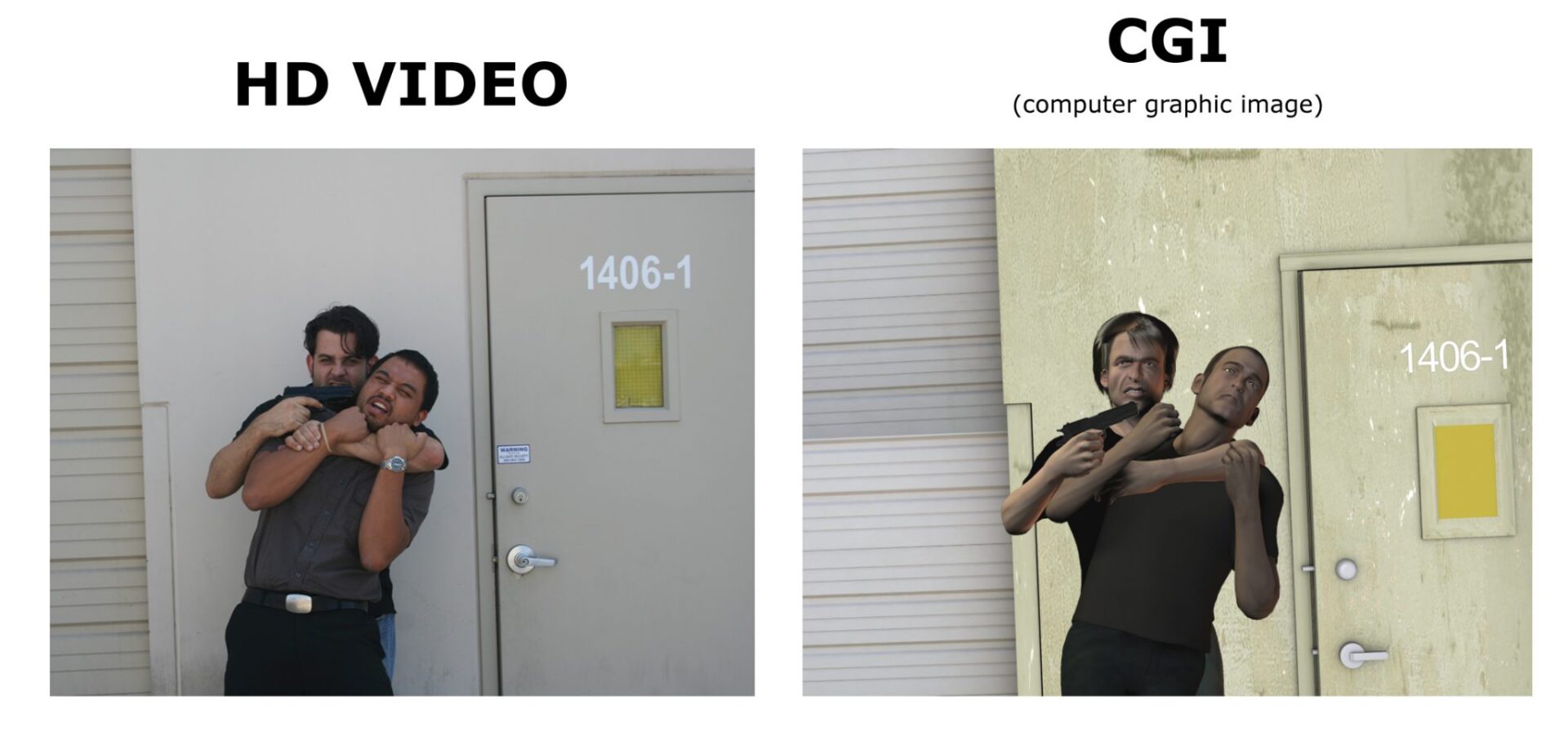
Police contacts involve real people in a myriad of situations. Police officers respond in their communities to everything from traffic stops to suspicious behavior to shootings and hostage situations.
The subjects involved in each incident unconsciously give a wide range of physical clues to responding police officers which helps them evaluate how to react to the unfolding scenes, including facial expressions, body movements, hand twitches and other inputs. That kind of situational awareness is critical, especially in life or death scenarios.
Choosing a Use of Force Training Simulator System
That’s why when police departments choose a use of force training simulator system, they should carefully research whether the system they buy includes high-quality real video taken with human actors, vs computer-generated imagery (CGI) with character approximations that turn such training into an unrealistic cartoon.
With talented human actors, the video simulations in quality use of force simulators such as VirTra’s V-300 five-screen system allow officers to see actual human emotions in their training, which provides true-to-life feedback about how an emergency incident is unfolding. That means the officers undergoing the training can accurately learn the real-life visual clues they are truly going to see in a subject’s eyes, face, hands, body movements and more, says Ken Emerson, a former 20-year veteran of the Arizona Department of Public Safety and a law enforcement subject matter expert at VirTra. These valuable “contextual cues” and ‘fact patterns” are critical for officers to evaluate subject’s behaviors and intent.
“With CGI, you’re getting mechanical types of movements,” says Emerson.
“You’re not getting the facial expressions, you’re not getting the voice pitch and tone changes you can get with live actors, the real-life screaming, the hollering. The mechanical movements of generated images also do not accurately match how humans really move. Most officers like the real video versus the CGI effects.”
To create such realism with computer-generated animations, software designers would have to figure out how to accurately re-create all of those specific movements, which is impractical from a production standpoint, Emerson says. “It would take forever to get all of that done in an animation.”
And just as important, says Emerson, with computer-generated training images, officers can’t generate needed compassion for the subjects and innocent victims they are involved with in the police use of force training scenarios.
“If you see it in CGI, you really don’t have empathy for that suspect and others,” he says. “You try to shoot the threat and instead you hit the hostage and it just looks like a cartoon. It doesn’t have that same psychological impact.”
Video vs Graphics Police Use of Force Training
That’s where real life video captured with real actors makes a huge difference, adds Emerson. “If you’re looking at a real person and you can see how scared they are, with a good actor you care about the outcome because you are not dealing with a cartoon character.”
The difference in approaches can be compared to using an animated driving simulator, he says. “If you look at computer-generated imagery in a driving simulator, it’s cartoonish-looking and you don’t get that feeling of realism. “If you put police officers in a simulator that’s not realistic, they don’t get real value out of it.” Simulated training shouldn’t look like a game nor should it be taken as a game.
100% Human Force on Force Training
VirTra’s police judgmental use of force training scenarios provide 100 percent human acted scenarios. They include hundreds of possible scenarios and alternate situational results based on how an officer responds to each situation. This enables force on force training sessions to be realistic, based officers’ reactions to each situation.
In addition, with real video, police departments can request custom video content that replicates situations their officers have faced so they can better train for similar situations in the future. That can be harder to do with CGI-based systems, says Emerson.
Emerson, who for many years served as a highway patrol officer in rural Arizona, says that “this training really comes into play when you are out there by yourself. Realism is better than CGI.”





